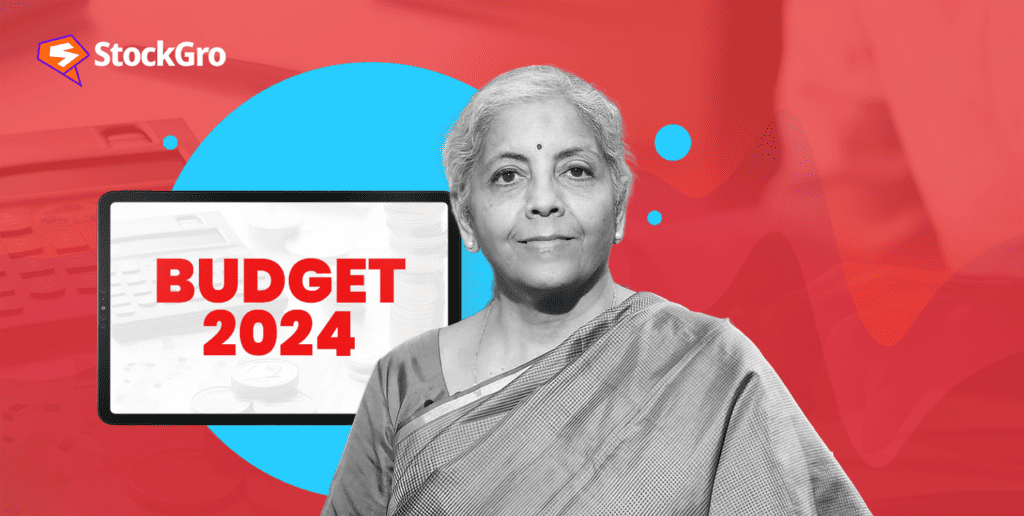
With Union Finance Minister Nirmala Sitharaman set to present the interim budget on February 1, anticipation looms large in the corridors of power and the business community. This interim budget precedes the full-fledged budget for the financial year 2024-25, slated to be announced following the 2024 Lok Sabha elections.
As the nation braces itself for these critical financial announcements, stakeholders are closely eyeing the unfolding scenario, eagerly awaiting insights into union budget expectations and the fiscal policies shaping the economic trajectory in the coming year.
Let’s explore the union budget 2024 expectations for specific sectors and enhance our understanding of what the outcome budget expectations could be.
Also read: What is a budget – A beginner’s guide
Economic indicators and financial health
Before delving into the expectations of different sectors, let’s first examine a few key economic indicators to determine the country’s financial health.
- Gross domestic product: According to the Reserve Bank of India’s 2023 survey, India’s GDP is the fastest-growing major economy in the world. It maintains a 6.0% real GDP growth forecast for 2023–24 and 6.4% for 2024–25.
- Fiscal deficit: A 5.9% GDP budgetary deficit is planned for 2024.
- Current account deficit (CAD): India’s Current Account Deficit (CAD) dropped to 1.9% of GDP in 2023 and is expected to fall further in 2024. The CAD contains export and import data.
Also read: A closer look at India’s latest Q4 GDP data: Key takeaways
Budget expectations: Will it bring any good news for taxpayers?
The union budget expectations from income tax and other related taxes are
- Revised tax regime: In the upcoming budget, tax system changes may include raising the rebate limit to ₹7 lakh, reducing tax slabs to five, and possibly lowering the surcharge for incomes over ₹5 crores. Changes could lower the maximum tax rate.
- Medical insurance deductions: To offset rising healthcare costs, a proposal has been made to raise the Section 80D deduction limits to ₹50,000 for individuals and ₹75,000 for seniors.
- National Pension System (NPS): Government officials plan to offer tax breaks on contributions and withdrawals to attract more NPS members, especially for those over 75 years of age.
Sector-specific expectations
Expectations from budget in the health sector
- The budget is expected to prioritise improving healthcare for women, especially during menopause, a crucial period in their lives.
- The industry expects healthcare spending to increase to between 2.5% and 3.5% of GDP.
- The budget is expected to prioritise spending on primary healthcare, essential medications, public health infrastructure, telemedicine, and other digital healthcare solutions.
- Additional provisions, such as tax breaks for investments in diagnostic infrastructure, incentives to build infrastructure, and measures to make it easier for private companies to do business, could strengthen the sector’s infrastructure transformation.
This funding will accelerate R&D and help make the country a more attractive place to manufacture medical devices, consumables, and equipment.
Also read: The healthcare industry in India: An overview
Budget expectation for the pharma sector
- With a projected market size of $400–$450 billion by 2047, the Indian pharmaceutical industry is actively seeking fiscal incentives to boost R&D. Due to the high risk and low success rates, the Secretary General of the Indian Pharmaceutical Alliance, Sudarshan Jain, stressed the need for ongoing investments in research.
- To help the pharmaceutical industry thrive, the budget should include measures that make it easier for them to do business while reducing their tax burdens directly and indirectly.
- Healthcare expenditure should reach 2.5% of GDP, innovation and R&D should be expedited, and the GST framework should be simplified.
Auto sector budget expectations
- Government support for environmentally friendly transportation options and increased sales of electric vehicles are priorities for the automobile sector. It involves creating the rules and regulations that will govern it.
- The government may prioritise boosting rural consumption and encouraging discretionary spending in the upcoming budget. Original Equipment Manufacturers (OEMs) of two-wheelers and entry-level four-wheelers with a focus on rural areas and auto ancillary companies that supply these OEMs are expected to reap the benefits of this emphasis.
- The sector expects incentives, including tax benefits and support for the Faster Adoption and Manufacturing of (Hybrid &) Electric Vehicles in India (FAME India) programme.
- A simplified tariff structure and GST are top priorities for the luxury vehicle industry. Presently, the highest GST slab applies to luxury vehicles at 28%. In comparison, sedans and SUVs incur an extra cess of 20% and 22%, respectively, bringing the total tax incidence to 50%, the budget expectation from the automobile sector.
- Policy stability and a persistent focus on encouraging investment and infrastructural development are other priorities for the automotive industry.
India’s aerospace and defence industry
- The military is anticipating a reshuffling of budget priorities. The government is expected to stick to its current procurement plans, focusing on important initiatives like acquiring 97 Tejas Mark-1A aircraft and constructing a second indigenous aircraft carrier.
- Experts anticipate a rise in capital expenditure of 5-7 per cent, which reflects a coordinated effort to strengthen the country’s defence capabilities.
- The government hopes to turn India into an export hub and achieve self-sufficiency in the long run. Defence investments would also persist, with increased capital expenditure likely to be more noticeable in FY2025.
Indian gem & jewellery industry
- Import duties on precious metals are currently 15%; the Gem & Jewellery Export Promotion Council (GJEPC) has called for a reduction to 4%. The trade group wants the current 5% customs tax on polished and cut diamonds lowered to 2.5%.
- Additionally, the launch of a Diamond Imprest Licence is something that the industry is eagerly anticipating.
- A decline in exports and employment in the jewellery industry would be the direct outcome of higher import taxes on cut and polished gemstones, making it more difficult for the industry to remain competitive in the face of rising prices in countries like Thailand and China.
EV industry
- Stakeholders request an extension of the FAME II subsidy programme before its expiration in March 2024. In line with the government’s goal of having 30% of Indian roads be electric by 2030, this would further improve the affordability and accessibility of electric vehicles for consumers.
- Many in the lithium-ion battery sector are crossing their fingers that the Goods and Services Tax (GST) on these products will be cut from 18% to 5%. Manufacturers could offer EVs at more competitive prices and further encourage consumer adoption if this significantly reduces manufacturing costs.
Banking sector
- Micro, Small & Medium Enterprises (MSMEs) are expected to benefit from a larger pool of available credit.
- To improve efficiency and encourage financial inclusion, there is a demand for a standardised Know Your Customer (KYC) framework to be applied to all financial services.
- One major expectation is increased investment in the insurance sector budget. An increase in funding will give the industry the push it needs.
- Policy changes are anticipated to improve NARCL’s (National Asset Reconstruction Company Limited) capacity to handle stressed and non-performing assets.
- Another anticipated development is the establishment of regulatory frameworks to combat digital fraud and create a more secure setting for online payments.
- One of the proposed measures is a 5% GST rate for startups empowering citizens through the last mile, providing them with essential digital and financial services.
Bottomline
The union budget 2024 is expected to bring significant changes and opportunities for various sectors of the Indian economy, such as healthcare, pharma, auto, EV, gem & jewellery, banking, and defence.
The budget will also address taxation, inflation, the fiscal deficit, and foreign exchange reserves. Stakeholders eagerly await the budget announcements and their implications for the nation’s future growth and development.

